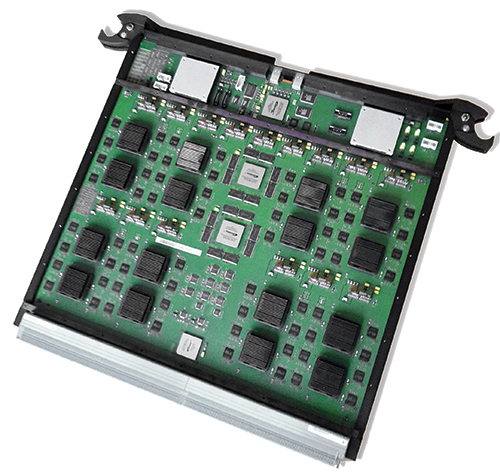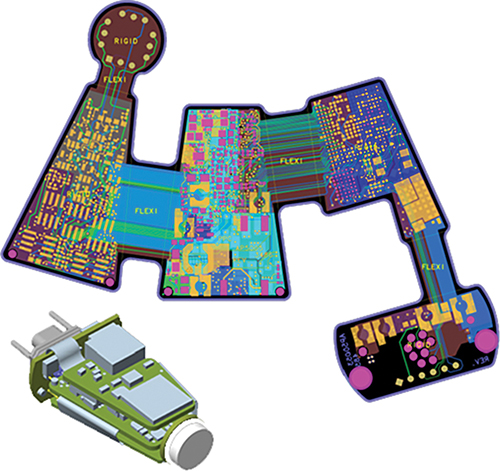The Holy Grail of PCB Software

What is the ultimate software solution for PCB design?
For many years, I have held the Indiana Jones’ perspective that the cup must be a plain clay goblet suitable for a poor carpenter – but maybe not? It will be interesting to find out if they can prove the finding is indeed the One. A grail, of course, is an object or goal sought after for its great significance. The “holy” designation owes to the association with Jesus. So maybe it would be more appropriate to seek the “grail of PCB design software,” but that just doesn’t sound as good; and besides, “Holy Grail” is often used to name the ultimate fulfilment of any particular endeavor.
Recently an editor asked, “Why is it that PCB placement and routing is not fully automated, and why does it still require so much manual interaction?” Is fully automated place-and-route the Holy Grail of PCB software?

Figure 1. Software that worked well with through-hole vias and DIP packages could not keep pace with the needs of surface mount technology and complex escape routing.
PCB CAD graveyards are filled with failed attempts to attain this goal. The primary factor that impacts the success of the grand software solution is that the component, fabrication and circuit technology are continually evolving, while at the same time adding variety and becoming more complex. This means software that was successful at one time becomes ineffective after a number of years. For example, as surface mount technology was adopted, it became clear very quickly that gridded routing technology could no longer be applied with effective results. This didn’t just require a tweaking of the code; it required completely different data structures and new algorithms.
Likewise, the introduction of microvias significantly increased the number of variables to consider. With through vias, the stackup options consisted of primarily how many signal/plane layers, and their order. Microvias introduce so many options and combinations for via models, layer transition styles, materials and processes that it looks like a menu at P.F Chang’s. How do software vendors keep up?
With every new development cycle, we have to allocate resources to both support the technology changes, as well as find ways to solve these challenges with even higher levels of productivity. It was all so simple for many years when we only had through-hole DIP components on an FR-4 through-via board. But then things started to evolve very quickly in the mid ’80s. Here is a list of many PCB component, board, and circuit technology changes that have impacted PCB design software over the last 30 years, in no particular order:
- Through-hole components: DIP, PGA.
- Surface mount components: SOT, SOIC, PLCC, QFP, LGA, BGA.
- COB with bond wires.
- (Long live) MCMs.
- Shrinking BGA pin pitches: 1.25mm, 1.0, 0.65, 0.5, 0.4.
- Shrinking SMT passives: 2920, 2512, 2010, 1812, 1806, 1608, 1210, 1206, 1005, 0805, 0603, 0402, 0201, 01005.
- Through vias.
- Blind/buried vias.
- Microvias.
- Skip vias.
- Stacked microvias.
- Via-in-pad.
- Backdrilling.
- Laminated.
- Buildup.
- Flex.
- Rigid-flex.
- ITO touch panel patterns.
- Analog.
- RF.
- From MHz to GHz.
- Differential signals.
- Managing impedance, crosstalk, timing, loss.
- Shock and vibration.
- Thermal dynamics.
- Power distribution.
- 3D.
Of course, these changes and improvements are all intended to increase circuit performance and manufacturing yields, while at the same time lower costs. Whichever companies can take advantage of this will have a much better chance of success in the electronics marketplace. The sheer volume of technology introduced each year is immense, and to gain an advantage, every electronics company wants to implement in a slightly different manner. Frankly, this complexity makes it impossible for one general place-and-route solution to be effective in all these areas. Even if this Holy Grail of PCB software is something that cannot be practically achieved (at least not this week), software vendors are still working on developing ultimate solutions in specific areas. We are not trying to replace all designers with a “One Button” solution. Rather, our method for keeping up with the new challenges is to empower designers with the ability to control the automated aspects of the software, provide results that are high quality (objectively and subjectively) and implement methods that significantly improve productivity.

Figure 2. Technologies such as flex, rigid-flex and mixed-signal PCBs require near constant development of software to keep pace.
Charles Pfeil is an engineering director focused on PCB design software at Mentor Graphics (mentor.com) and a member of the Dieter W. Bergman Design Hall of Fame; This email address is being protected from spambots. You need JavaScript enabled to view it..




